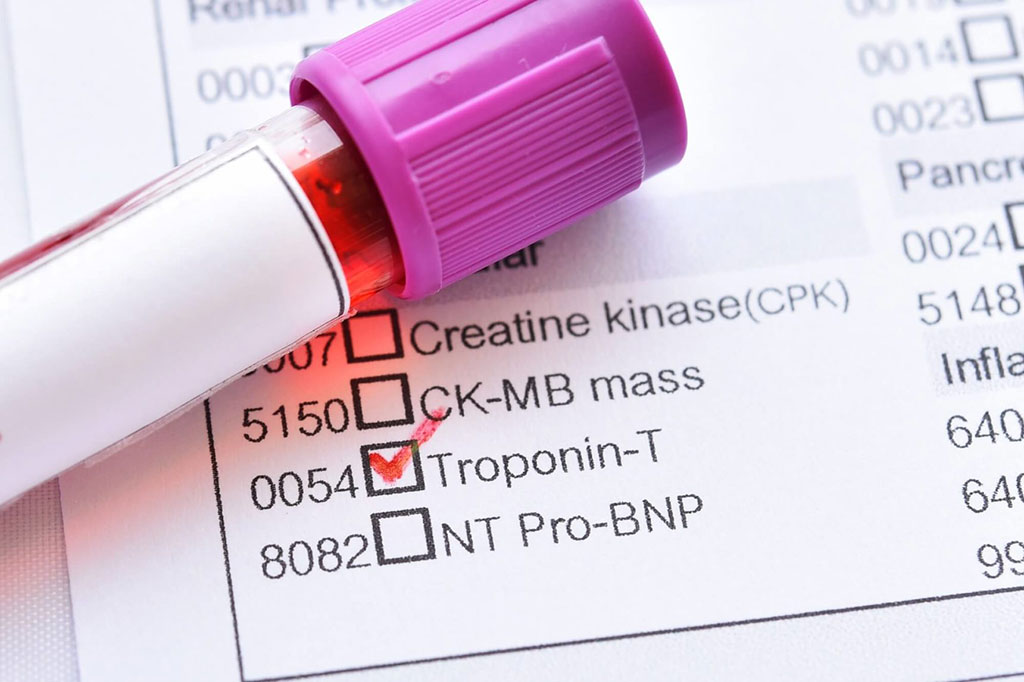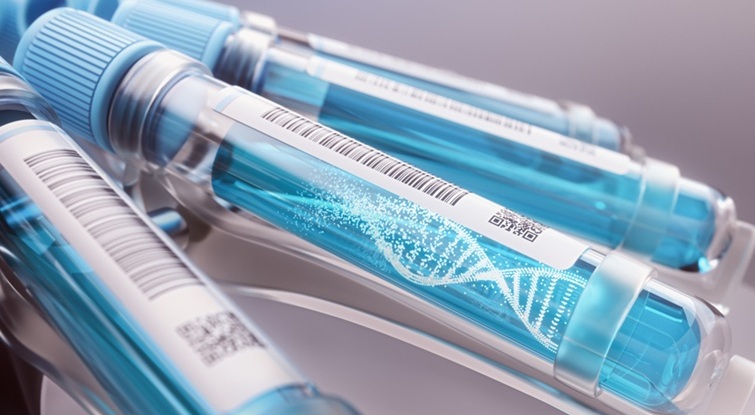Biomarkers Associated With Cardiovascular Outcomes in Psoriatic Patients
|
By LabMedica International staff writers Posted on 22 Mar 2022 |

Psoriasis and psoriatic arthritis (PsA), collectively known as psoriatic disease (PsD), are characterized by excess cardiovascular (CV) morbidity and mortality compared to the general population.
Novel laboratory and imaging biomarkers improve CV risk prediction in the general population, and it has been suggested that they could be combined with conventional scoring systems to optimize CV risk stratification.
A group of Medical Scientists working with the Women’s College Hospital (Toronto, ON, Canada) included in a study, a cohort comprised of participants with a diagnosis of psoriasis without arthritis (PsC) followed since 2006, and psoriatic arthritis (PsA) that have been followed prospectively since 1978 as part of a larger study to investigate disease-related outcomes. Among PsA patients, 98% meet the Classification of Psoriatic Arthritis (CASPAR) criteria. PsC patients are enrolled based on a diagnosis of arthritis conformed by a dermatologist and a rheumatologist.
Annual serum samples have been collected and stored in a biobank since 2002, thus patients entered this study at the date they provided their first serum sample. NT-proBNP (Cobas, Roche Diagnostics, Indianapolis, IN, USA) and high-sensitivity cTnI (ARCHITECT STAT, Abbott Laboratories, Abbott Diagnostics, Abbott Park, IL, USA) were measured in serum samples on automated clinically validated immunoassay analyzers using the manufacturers’ calibrators and quality controls. The limit of detection was 5 pg/mL for NT-proBNP and 1.1 pg/mL for cTnI.
The association between cardiac biomarkers and carotid atherosclerosis was assessed by multivariable regression after adjusting for CV risk factors. In univariate analyses, cTnI (β coefficient, 0.52; 95% confidence interval (CI), 0.3-0.74) and NT-proBNP (β coefficient, 0.24; 95% CI, 0.1-0.39) were associated with carotid total plaque area (TPA). After adjusting for CV risk factors, the association remained statistically significant for cTnI (adjusted β coefficient, 0.21; 95% CI, 0-0.41), but not NT-proBNP. Among all the 1,000 patients in the study who were assessed for CV risk prediction, 64 patients had incident CV events. When comparing a base model with the Framingham Risk Score alone versus expanded models that included the Framingham Risk Score plus cardiac biomarkers, there was no improvement in predictive performance.
The authors concluded that in patients with psoriatic disease (PsD), cTnI may reflect the burden of atherosclerosis, independent of traditional CV risk factors. cTnI and NT-proBNP are associated with incident CV events independent of the Framingham Risk Score (FRS), however, further study of their role in CV risk stratification is warranted. The study was published on march 8, 2022 in the journal Arthritis & Rheumatology.
Related Links:
Women’s College Hospital
Roche Diagnostics
Abbott Diagnostics
Latest Clinical Chem. News
- Blood Test Could Predict and Identify Early Relapses in Myeloma Patients
- Compact Raman Imaging System Detects Subtle Tumor Signals
- Noninvasive Blood-Glucose Monitoring to Replace Finger Pricks for Diabetics
- POC Breath Diagnostic System to Detect Pneumonia-Causing Pathogens
- Online Tool Detects Drug Exposure Directly from Patient Samples
- Chemical Imaging Probe Could Track and Treat Prostate Cancer
- Mismatch Between Two Common Kidney Function Tests Indicates Serious Health Problems
- VOCs Show Promise for Early Multi-Cancer Detection
- Portable Raman Spectroscopy Offers Cost-Effective Kidney Disease Diagnosis at POC
- Gold Nanoparticles to Improve Accuracy of Ovarian Cancer Diagnosis
- Simultaneous Cell Isolation Technology Improves Cancer Diagnostic Accuracy
- Simple Non-Invasive Hair-Based Test Could Speed ALS Diagnosis
- Paper Strip Saliva Test Detects Elevated Uric Acid Levels Without Blood Draws
- Prostate Cancer Markers Based on Chemical Make-Up of Calcifications to Speed Up Detection
- Breath Test Could Help Detect Blood Cancers
- ML-Powered Gas Sensors to Detect Pathogens and AMR at POC
Channels
Molecular Diagnostics
view channel
Multiplex Antibody Assay Could Transform Hepatitis B Immunity Testing
Hepatitis B remains a major global health challenge, yet immunity testing has historically been constrained by cost, operational complexity, and single-analyte approaches. Now, a multiplex antibody assay... Read more
Genetic Testing Improves Comprehensive Risk-Based Screening for Breast Cancer
Breast cancer screening has long relied on age-based guidelines, assuming similar risk across all women despite clear evidence that individual risk varies widely. This one-size-fits-all approach can lead... Read more
Urine Test Could Reveal Real Age and Life Span
Chronological age does not always reflect how quickly the body is aging, as biological age is shaped by genetics, stress, sleep, nutrition, and lifestyle factors such as smoking. A higher biological age... Read more
Genomic Test Identifies African Americans at Risk for Early Prostate Cancer Recurrence
Prostate cancer is one of the most commonly diagnosed cancers in men and a leading cause of cancer-related death, particularly in the United States. African American men face a disproportionately higher... Read moreHematology
view channel
MRD Tests Could Predict Survival in Leukemia Patients
Acute myeloid leukemia is an aggressive blood cancer that disrupts normal blood cell production and often relapses even after intensive treatment. Clinicians currently lack early, reliable markers to predict... Read more
Platelet Activity Blood Test in Middle Age Could Identify Early Alzheimer’s Risk
Early detection of Alzheimer’s disease remains one of the biggest unmet needs in neurology, particularly because the biological changes underlying the disorder begin decades before memory symptoms appear.... Read more
Microvesicles Measurement Could Detect Vascular Injury in Sickle Cell Disease Patients
Assessing disease severity in sickle cell disease (SCD) remains challenging, especially when trying to predict hemolysis, vascular injury, and risk of complications such as vaso-occlusive crises.... Read more
ADLM’s New Coagulation Testing Guidance to Improve Care for Patients on Blood Thinners
Direct oral anticoagulants (DOACs) are one of the most common types of blood thinners. Patients take them to prevent a host of complications that could arise from blood clotting, including stroke, deep... Read moreImmunology
view channel
Ultrasensitive Liquid Biopsy Demonstrates Efficacy in Predicting Immunotherapy Response
Immunotherapy has transformed cancer treatment, but only a small proportion of patients experience lasting benefit, with response rates often remaining between 10% and 20%. Clinicians currently lack reliable... Read more
Blood Test Could Identify Colon Cancer Patients to Benefit from NSAIDs
Colon cancer remains a major cause of cancer-related illness, with many patients facing relapse even after surgery and chemotherapy. Up to 40% of people with stage III disease experience recurrence, highlighting... Read moreMicrobiology
view channel
New UTI Diagnosis Method Delivers Antibiotic Resistance Results 24 Hours Earlier
Urinary tract infections affect around 152 million people every year, making them one of the most common bacterial infections worldwide. In routine medical practice, diagnosis often relies on rapid urine... Read more
Breakthroughs in Microbial Analysis to Enhance Disease Prediction
Microorganisms shape human health, ecosystems, and the planet’s climate, yet identifying them and understanding how they are related remains a major scientific challenge. Even with modern DNA sequencing,... Read morePathology
view channel
Genetics and AI Improve Diagnosis of Aortic Stenosis
Aortic stenosis is a progressive narrowing of the aortic valve that restricts blood flow from the heart and can be fatal if left untreated. There are currently no medical therapies that can prevent or... Read more
AI Tool Simultaneously Identifies Genetic Mutations and Disease Type
Interpreting genetic test results remains a major challenge in modern medicine, particularly for rare and complex diseases. While existing tools can indicate whether a genetic mutation is harmful, they... Read more
Rapid Low-Cost Tests Can Prevent Child Deaths from Contaminated Medicinal Syrups
Medicinal syrups contaminated with toxic chemicals have caused the deaths of hundreds of children worldwide, exposing a critical gap in how these products are tested before reaching patients.... Read more
Tumor Signals in Saliva and Blood Enable Non-Invasive Monitoring of Head and Neck Cancer
Head and neck cancers are among the most aggressive malignancies worldwide, with nearly 900,000 new cases diagnosed each year. Monitoring these cancers for recurrence or relapse typically relies on tissue... Read moreTechnology
view channel
Pioneering Blood Test Detects Lung Cancer Using Infrared Imaging
Detecting cancer early and tracking how it responds to treatment remains a major challenge, particularly when cancer cells are present in extremely low numbers in the bloodstream. Circulating tumor cells... Read more
AI Predicts Colorectal Cancer Survival Using Clinical and Molecular Features
Colorectal cancer is one of the most common and deadly cancers worldwide, and accurately predicting patient survival remains a major clinical challenge. Traditional prognostic tools often rely on either... Read moreIndustry
view channel
BD and Penn Institute Collaborate to Advance Immunotherapy through Flow Cytometry
BD (Becton, Dickinson and Company, Franklin Lakes, NJ, USA) has entered into a strategic collaboration with the Institute for Immunology and Immune Health (I3H, Philadelphia, PA, USA) at the University... Read more

















